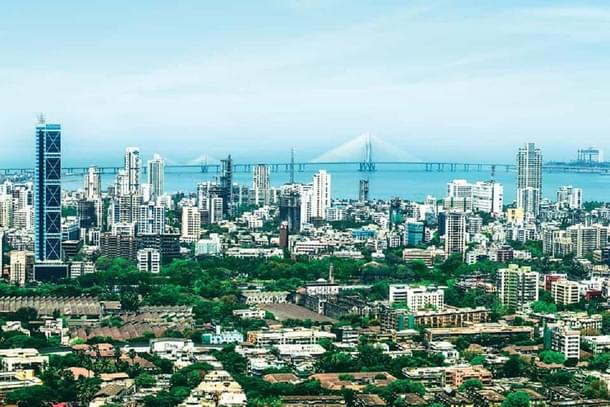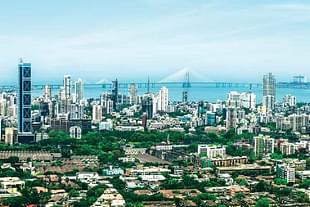Infrastructure
Mumbai's Skyscraper Boom: City Set For 34 Per Cent Increase In High-Rise Buildings By 2030
V Bhagya Subhashini
May 31, 2024, 03:40 PM | Updated 03:40 PM IST
Save & read from anywhere!
Bookmark stories for easy access on any device or the Swarajya app.


Mumbai, with a staggering population density of approximately 21,000 people per square kilometre, stands as the hub of tall buildings in India.
According to a recent report by real estate consultancy firm Anarock, the Mumbai Metropolitan Region (MMR) is projected to see a 34 per cent increase in buildings over 40 floors by 2030.
As of 2023, Mumbai has 154 completed towers exceeding 40 floors. Anarock's report indicates that between 2024 and 2030, this number will rise to 207, marking a significant jump. These 207 towers are currently in various stages of construction, with completion expected within the next six years.
Given the city's constrained land availability, the city will likely continue to lead vertical construction in the country. The city dominates the Indian skyline with a 77 per cent share of tall buildings and is 70th in the index of global financial centres, according to the report by CBRE.
While other Indian cities have seen a slowdown in high-rise construction, especially post-COVID-19, Mumbai's skyscraper growth continues unabated.
South Central Mumbai leads with the highest number of tall towers, boasting 103 skyscrapers. Of these, 61 are completed, and another 42 are slated for completion by 2030.
Mumbai's central suburbs follow with 87 high-rises, with 42 already completed and 45 under construction. The western suburbs have 80 high-rise buildings, with 50 completed and 30 expected to be finished within the next six years.
Thane, a neighbouring area, has recently embraced the high-rise trend, with 61 towers over 40 floors. Only two of these are completed, with the remaining 59 under development. Navi Mumbai also contributes to the high-rise count with 25 towers, 10 of which are completed and 15 under construction.
High-rise buildings are predominantly concentrated in areas like Byculla, Worli, Lower Parel, Prabhadevi, Mahalakshmi, Marine Lines, Mulund, Chembur, Kanjurmarg, Santacruz, Malad, Goregaon, and Thane city. Notably, the Mumbai region currently has around 61 towers with more than 60 floors each.
Anuj Puri, Chairman of ANAROCK Group, commented on Mumbai's skyline transformation: "Skyscrapers are synonymous with Mumbai's real estate landscape and increasingly define it. Apart from its extreme shortage of developable land, the city's towering urban aesthetic has become an apt symbol of its economic might."
He added, "Between 2019 and 2023, 154 high-rises with 40+ floors were added to the MMR market; from 2024 to 2030, 207 more will be completed. These projects have already been launched across the region, " reports The Hindu.
Why vertical growth for Indian cities?
Urban sprawl poses various challenges, including limited institutional capacities and fragmented government regulations. As more individuals migrate to cities, these areas continue to expand horizontally, resulting in increasing land use changes and adding to an increase in carbon emissions.
Vertical growth presents an opportunity to mitigate these emissions by creating compact environments equipped with efficient mobility features. Additionally, it helps ease some of the supply constraints that can come with significant population growth and sprawl.
By constructing vertically, more space can be made available in city centres, where elevated offices and residences enable the ground floors and basements to be repurposed for shops and recreational amenities. Developers can accommodate a larger number of residents and businesses without requiring a larger land or floor area.
Additionally, open spaces between clusters of high-rise buildings can be transformed into parks and public areas. In addition to their appeal to occupants, tall buildings also attract investors seeking high-net return properties, due to the potential for diversified tenant mixes.
V Bhagya Subhashini is a staff writer at Swarajya. She tracks infrastructure developments.





